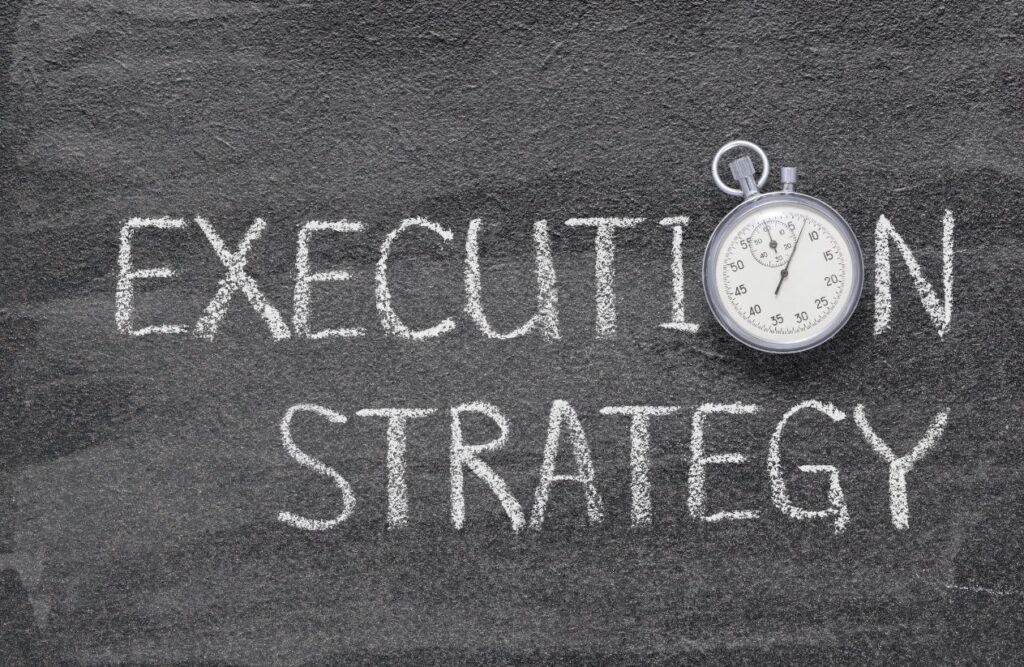Planning large-scale events? You are in the right place, read more to learn more!
Table of Contents
Key Steps to Kickstart Your Large-Scale Event Planning

When embarking on large-scale event planning, it’s crucial to approach the process with meticulous attention and a strategic mindset.
The success of your event hinges not only on the grand vision but equally on the precision with which you execute the foundational steps.
Here are key strategies to ensure your large-scale event not only meets but exceeds expectations.
Develop a Comprehensive Plan

The first step in any successful large-scale event planning is to establish a comprehensive plan.
This document should outline every aspect of the event, from the overarching goals and objectives to the minute details such as logistics and budgeting.
Start by defining the purpose of the event—is it to educate, celebrate, network, or raise funds? Understanding the “why” behind your event will guide all subsequent decisions, from choosing the right venue to selecting speakers and entertainment.
Incorporate timelines, milestones, and a detailed project management schedule to keep everything on track.
Assemble a Skilled Team
No event planner is an island, particularly when it comes to orchestrating large-scale functions.
Assembling a skilled team is pivotal for dividing the workload and leveraging diverse expertise.
This team should include professionals adept in areas such as logistics, marketing, sponsorship acquisition, and customer service.
Each member should have clearly defined roles and responsibilities, aligned with their strengths and skills. Effective communication and regular meetings are crucial to ensure everyone remains on the same page and any issues are swiftly addressed.
Engage and Understand Your Audience
Understanding and engaging your audience is critical in large-scale event planning.
Conduct market research to gain insights into your target demographic’s preferences, needs, and expectations.
This can involve surveys, focus groups, or analyzing data from past events. Tailoring the event experience to match your audience’s expectations is key to ensuring satisfaction and engagement.
Additionally, utilize social media and email marketing to build anticipation, keep potential attendees informed, and foster a community around your event. Listening to feedback and adapting your strategy accordingly can also enhance the overall attendee experience.
By meticulously planning, assembling a strong team, and placing your audience at the heart of your event, you can create a memorable and impactful large-scale event.
Remember, the devil is in the details, but the impact lies in the big picture—balancing these elements is the hallmark of an experienced and skilled event planner.
Essential Elements for a Flawless Event Execution

Executing a flawless event, especially on a large scale, requires meticulous planning, unwavering attention to detail, and the ability to anticipate and manage potential challenges.
The success of an event lies in the seamless integration of several essential elements, which every experienced event planner swears by.
Understanding these fundamental aspects is crucial for any event planner aiming to execute events that are remembered for all the right reasons.
Comprehensive Planning and Organization
The foundation of any successful event is a comprehensive plan that outlines every detail, from the initial concept to the post-event evaluation.
This includes creating a detailed timeline, budget management, selecting and coordinating with vendors, venue selection and setup, as well as logistics and flow of the event.
A thorough checklist is indispensable, ensuring that nothing is overlooked. Advanced planning also involves preparing for contingencies, with backup plans ready to deploy should any unforeseen circumstances arise.
Engagement and Experience
In today’s digital age, engaging your audience before, during, and after the event is paramount.
This means leveraging social media platforms for marketing and engagement strategies, using event apps for ease of access to information, and incorporating immersive and interactive elements during the event to create memorable experiences.
Personalization plays a key role in engagement, allowing attendees to feel valued and part of something unique. Keep the audience’s needs and expectations at the forefront of your planning to ensure satisfaction and positive feedback.
Technology Integration
Technological advancements have revolutionized the way events are planned, executed, and experienced.
From digital invitations and online registrations to live streaming and augmented reality experiences, technology can enhance every aspect of an event.
It’s important to stay up-to-date with the latest tech trends and consider how they can be integrated into your event to streamline operations, improve attendee engagement, and provide analytics for measuring the event’s success.
Additionally, ensuring reliable Wi-Fi, charging stations, and tech support on-site can greatly enhance the attendee experience.
By focusing on these essential elements, event planners can ensure a smooth execution and create an impactful, memorable event. It’s the seamless orchestration of these details that separates a good event from a great one.
Innovative Marketing Strategies for Maximum Event Attendance

Achieving maximum attendance at any large-scale event hinges on employing innovative marketing strategies.
As an experienced event planner, I’ve come to realize that traditional advertising methods, while still relevant, must be complemented with more dynamic and interactive approaches to capture the attention of a broad audience.
Below are some tactics that have proven effective in drawing large crowds.
Utilizing Social Media Platforms
The power of social media in event marketing cannot be overstated.
Utilizing platforms like Instagram, Twitter, and Facebook for promoting events allows you to reach a vast audience with minimal effort.
Creating engaging content such as behind-the-scenes looks, countdowns, and interactive polls can generate buzz and anticipation.
Moreover, encouraging attendees to share their experiences and using unique hashtags can amplify your event’s visibility.
Leveraging Influencer Partnerships
In today’s digital age, influencers wield significant power in shaping consumer behavior.
Partnering with influencers who align with your event’s theme or industry can provide access to their loyal following.
This strategy involves careful selection of influencers, as the authenticity of their endorsement can greatly influence their followers’ decision to attend your event.
Provide them with a memorable experience or exclusive previews to share with their audience, creating a win-win situation.
Offering Early Bird and Exclusive Perks
Nothing entices potential attendees more than the feeling of receiving exclusive benefits.
Offering early bird discounts, VIP packages, or limited-time offers creates a sense of urgency and exclusivity. These incentives can encourage people to make early commitments and spread the word.
Additionally, consider creating tiered ticket options, providing varying levels of access and perks, catering to different budget levels and enhancing the overall attendee experience.
Implementing these innovative marketing strategies requires creativity, adaptability, and an understanding of your target audience.
By engaging potential attendees through various channels and offering genuine value, you can significantly increase the chances of achieving maximum attendance at your large-scale event.
Risk Management: Ensuring Safety and Compliance at Your Event

Risk management is a crucial aspect of planning and executing large-scale events. It involves identifying potential risks, assessing their impact, and implementing strategies to mitigate them.
This ensures the safety of all participants and compliance with legal and regulatory requirements.
Effective risk management not only safeguards against unforeseen circumstances but also enhances the overall event experience.
Identifying Potential Hazards
The first step in risk management is to identify potential risks that could affect your event.
These can range from severe weather conditions, technical failures, and health emergencies, to security threats.
Conducting a thorough risk assessment involves evaluating the likelihood of each risk and its potential impact on the event. Engaging with local authorities, health and safety advisors, and your venue to understand specific risks and compliance requirements is essential.
This collaborative approach ensures a comprehensive evaluation of all possible hazards.
Developing a Mitigation Plan
Once potential risks are identified, developing a detailed mitigation plan is critical. This plan should outline strategies to prevent, manage, and respond to various risks.
For instance, contingency plans for severe weather might include arranging alternative indoor venues or dates. Health emergencies may require pre-event health screenings, onsite medical staff, and clear protocols for managing incidents.
Ensuring robust security measures, including hiring trained security personnel and implementing crowd control techniques, addresses security concerns. Your mitigation plan should be flexible and scalable, capable of adapting to evolving situations.
Implementing Safety Measures and Ensuring Compliance
Effective risk management also involves implementing appropriate safety measures and ensuring compliance with all relevant laws and regulations.
This includes securing necessary permits, adhering to fire safety standards, and meeting accessibility requirements.
Regular training sessions for staff and volunteers on emergency procedures and safety protocols are vital. It’s also important to communicate clearly with attendees about safety measures and emergency instructions.
Establishing a clear line of communication with local emergency services and having an incident command system in place ensures a coordinated response in case of an emergency.
In conclusion, risk management is an integral part of planning a successful large-scale event.
By identifying potential hazards, developing a comprehensive mitigation plan, and implementing effective safety measures, event planners can significantly reduce risks and ensure a safe, enjoyable experience for all participants.
Post-Event Analysis: Measuring Success and Learning for the Future

After the conclusion of a large-scale event, it’s imperative to transition from execution mode into reflection and learning.
This phase is not merely about dwelling on what could have been but rather extracting valuable insights to refine future events.
Through meticulous post-event analysis, we can measure success against our initial goals and identify areas for improvement.
Quantitative Success Metrics
The foundation of post-event analysis rests on evaluating quantitative metrics.
Attendance is often the most straightforward figure, but deeper insights come from engagement levels, social media reach, and app interactions during the event.
Financial performance, including revenue generated versus budget spent, provides a clear indicator of fiscal success.
In today’s data-driven world, collecting and analyzing these figures through surveys and digital analytics tools is essential for an impartial evaluation of the event’s impact.
Qualitative Feedback: Voice of the Attendee
Beyond numbers, the true essence of an event’s success is often captured in the attendees’ experiences.
Gathering qualitative feedback through post-event surveys, social media monitoring, and direct conversations can offer invaluable perspectives.
This feedback is critical for understanding what resonated with the audience, what was missing, and the overall sentiment towards the event.
It’s this insight that allows an experienced event planner to weave together the narrative of an event’s impact, beyond just the black and white of data.
Operational Review and Future Planning
An often overlooked but vital component of post-event analysis is the operational review.
This involves examining the efficiency of logistics, the effectiveness of the marketing strategy, and the performance of various teams and vendors.
Identifying bottlenecks, unexpected challenges, and areas of strength helps in formulating a robust blueprint for future events.
Additionally, it’s crucial to assess how well the event aligned with its original objectives and mission. This reflection not only aids in continuous improvement but also ensures that each event is a stepping stone towards mastering the art of large-scale event planning.
By integrating both quantitative and qualitative analysis with an operational review, event planners can construct a comprehensive picture of their event’s success and areas for growth.
This post-event reflection is indispensable for evolving practices, enhancing attendee satisfaction, and ensuring the long-term success of future events.






